On June 30, 2025, an art therapy session titled “Group Image” took place at the Centre for Contemporary Art – a collective exercise designed to strengthen the sense of unity, increase awareness of group interaction dynamics, and foster a supportive environment. Participants worked together to create a single picture symbolising their group, allowing everyone to contribute their input and observe how individual elements merge into a cohesive canvas. The use of graphic materials (pencils, markers, liners) enabled participants to focus on lines, shapes, contrasts, and shades, which often reflect internal perceptions of structure, connection, and emotional depth.
Session participants were invited to create a collective “group image”. This meant that each person added their part to a shared drawing without knowing what the final result would be and without a unified plan. It could be an abstract imae with intertwined lines and shapes, or a more symbolic representation where each element embodied a specific quality of the group or its members. The key requirement was the joint elaboration of the group image.
This art therapy practice had a figurative nature: each element in the resulting composition symbolised a particular quality of the group or its members. The main condition of the activity was the collective development of the shared image, which required engagement, interaction, and empathy from all participants. The value of this collaborative work lay in the opportunity for each participant to understand their role in the group and to feel like part of a meaningful, holistic process where their contribution mattered. Joint creative activity fostered trust among participants, as it required flexibility, a willingness to share space, materials, and ideas, breaking down communication barriers and deepening emotional connection. Through the use of lines, colours, and forms, participants could express not only positive energy but also the tension or challenges they experienced in interaction, making it possible to externalise the group dynamic and gently process it.
As a result, the creation of the shared group image became not only an act of collective creativity but also a source of support, safety, and belonging – a visual affirmation that the group is capable of acceptance, understanding, and serving as a resource for everyone.
The “Group Image” practice proved to be highly effective in achieving therapeutic goals, as it encouraged each participant to gain a deeper understanding of their role within the collective. During the collaborative process, participants felt like essential parts of the group’s activity and saw how their efforts contributed to the outcome and collective vision. Creating a group artwork without a predetermined plan presented a creative challenge that required openness to new ideas, adaptability, and trust in one's fellow artists. These conditions helped strengthen mutual empathy, build trust, and foster deeper emotional contact between participants.
Furthermore, through the visual representation, the group was able to explore its dynamics, identifying its strengths, observing the formation of interconnections among members, and even gently touching upon areas of tension or challenge, not rejected, but instead organically woven into the overall composition. As a result, the collective creation became not just a product of artistic expression but a space for reflecting on shared experience and accepting diverse emotional states. The completed canvas became a symbol of unity, support, and mutual understanding – a visual reminder that participants are not alone, and that the group is a living organism capable of connecting, supporting, and inspiring. This profound experience of togetherness enabled each participant not only to feel their significance but also to uncover new inner resources for moving forward.
The session was moderated by Olena Ostrohliad, Senior Lecturer at the Department of Fine Arts, and Olena Kryvenko, Assistant at the Department of Psychology and Pedagogy and practical psychologist at Poltava Polytechnic.
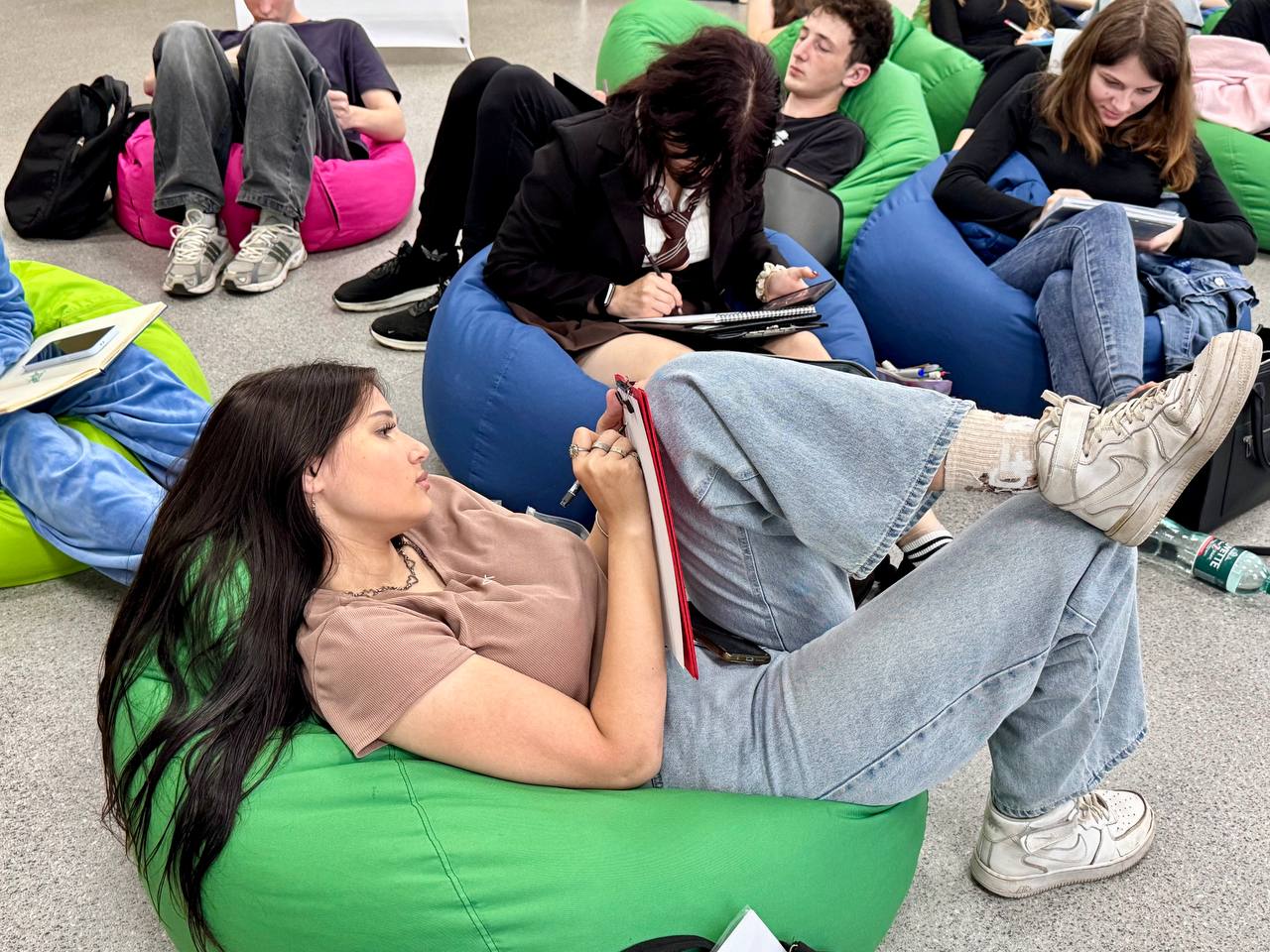
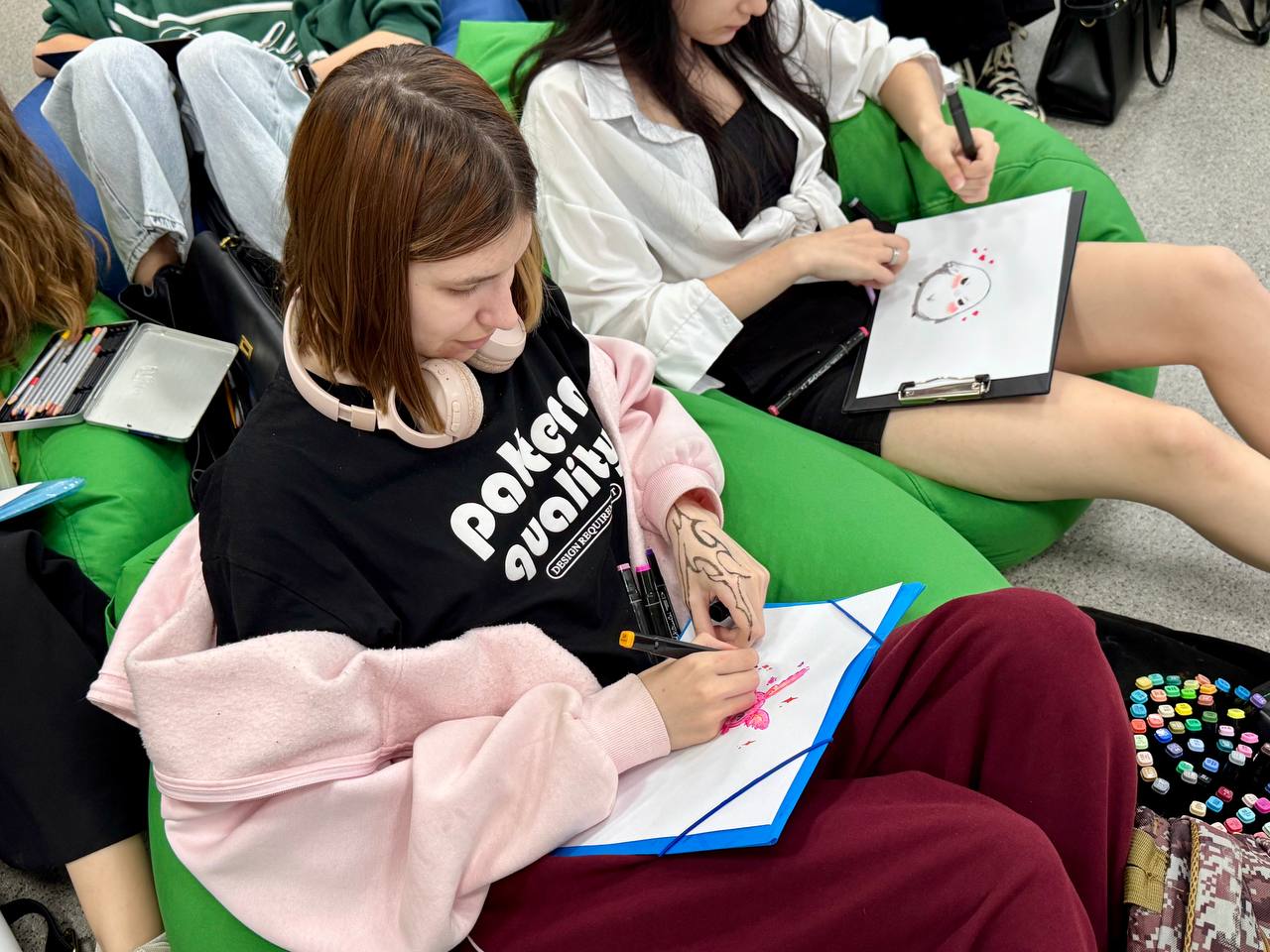
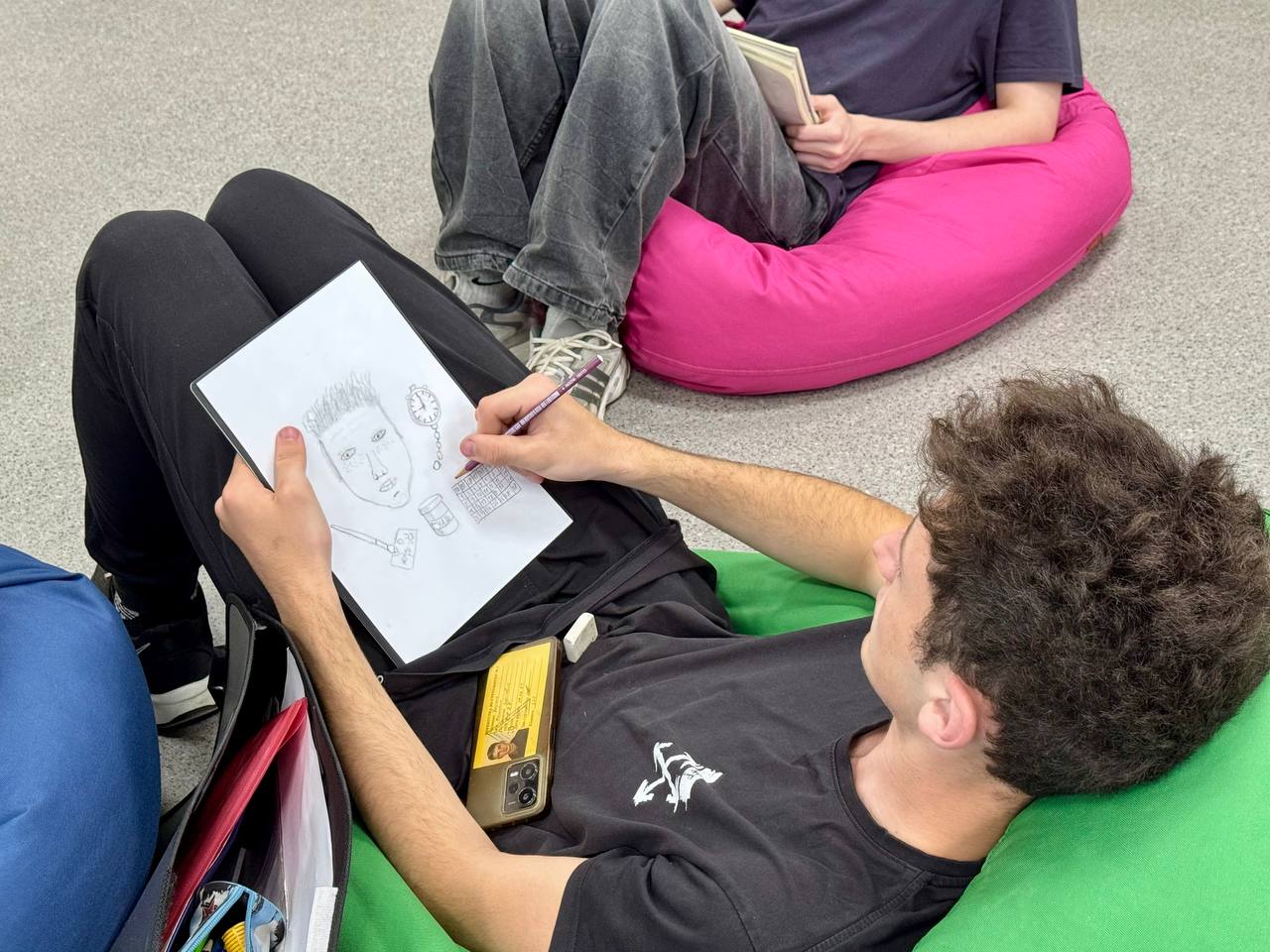
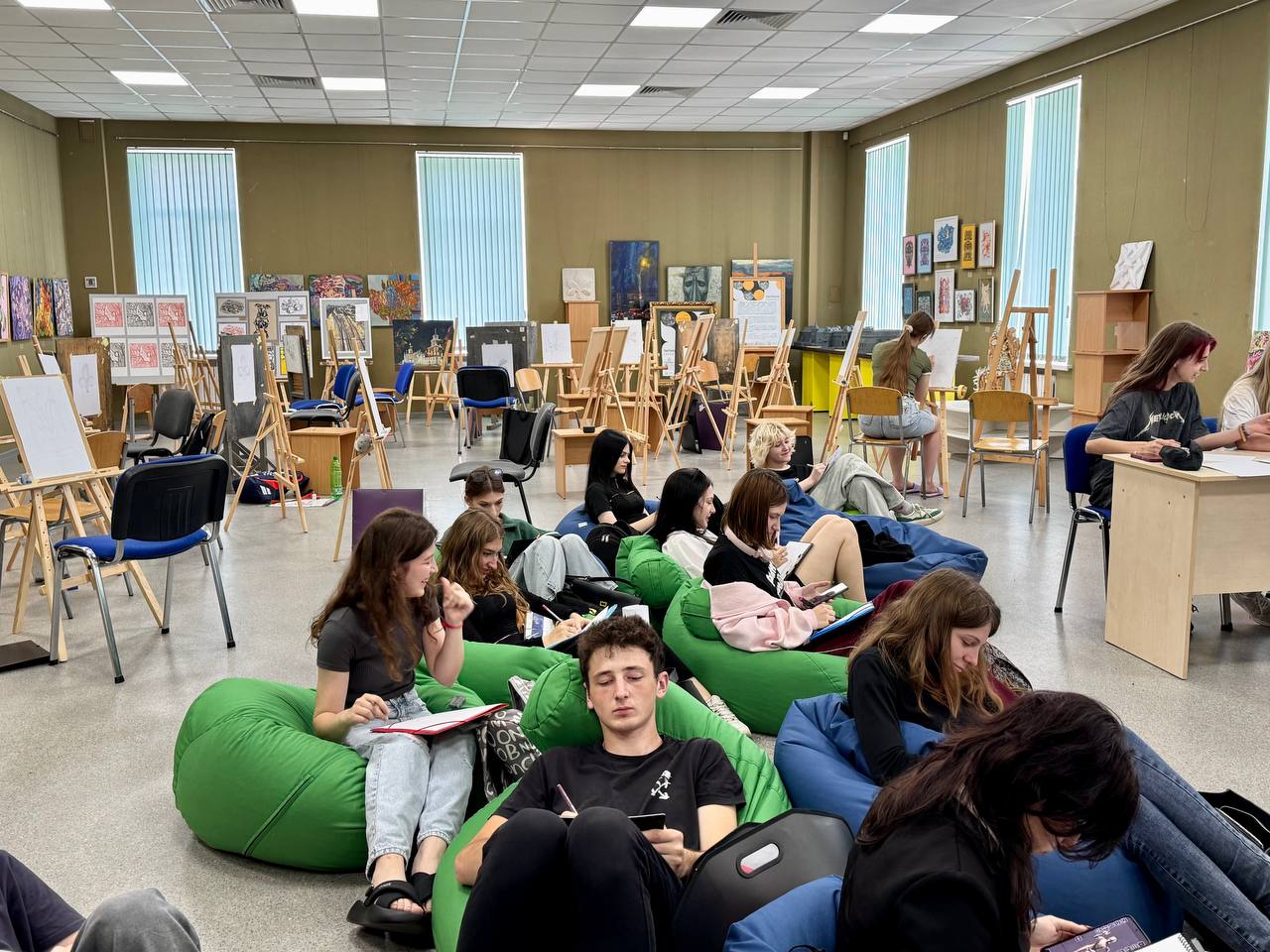
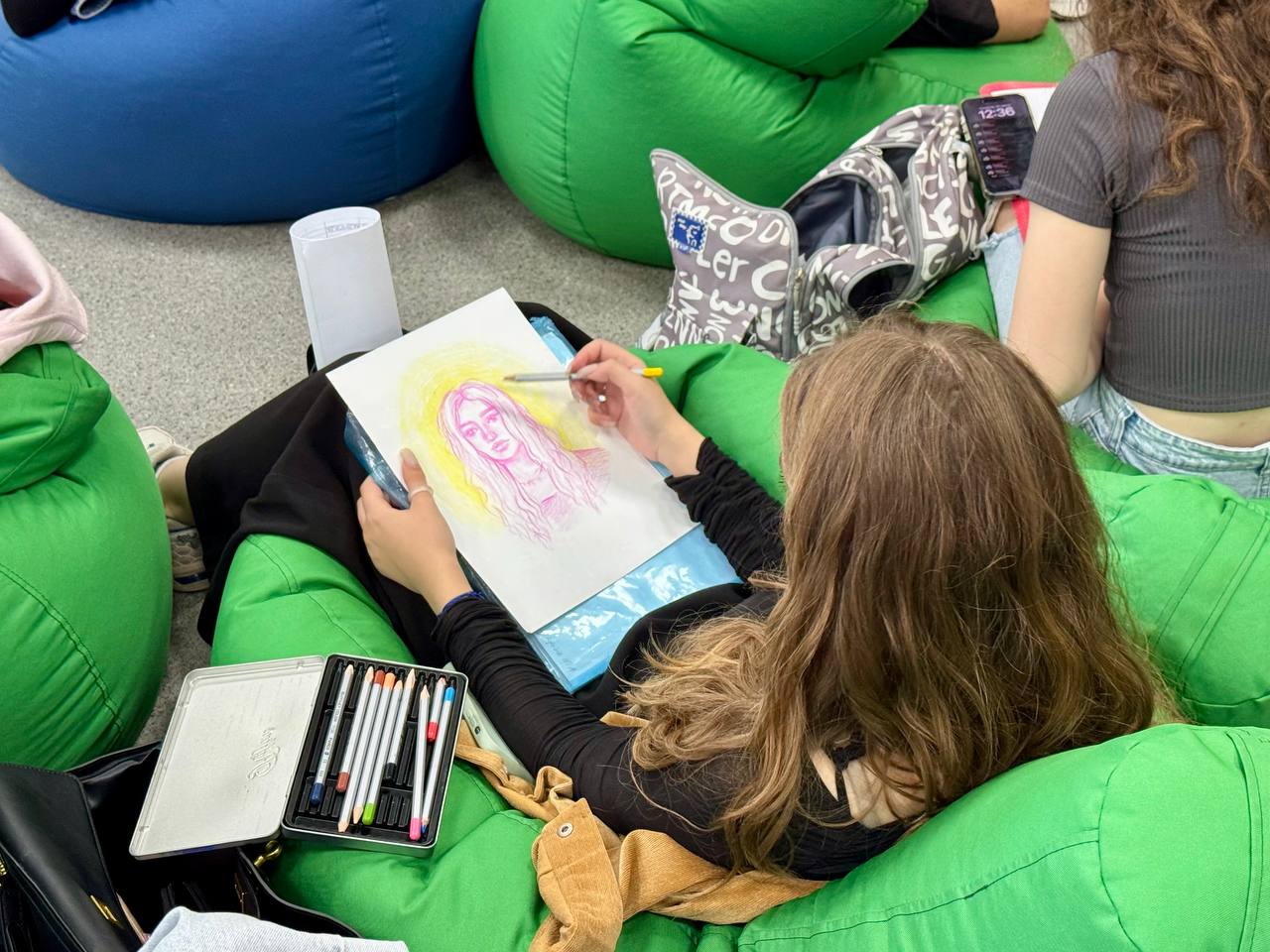
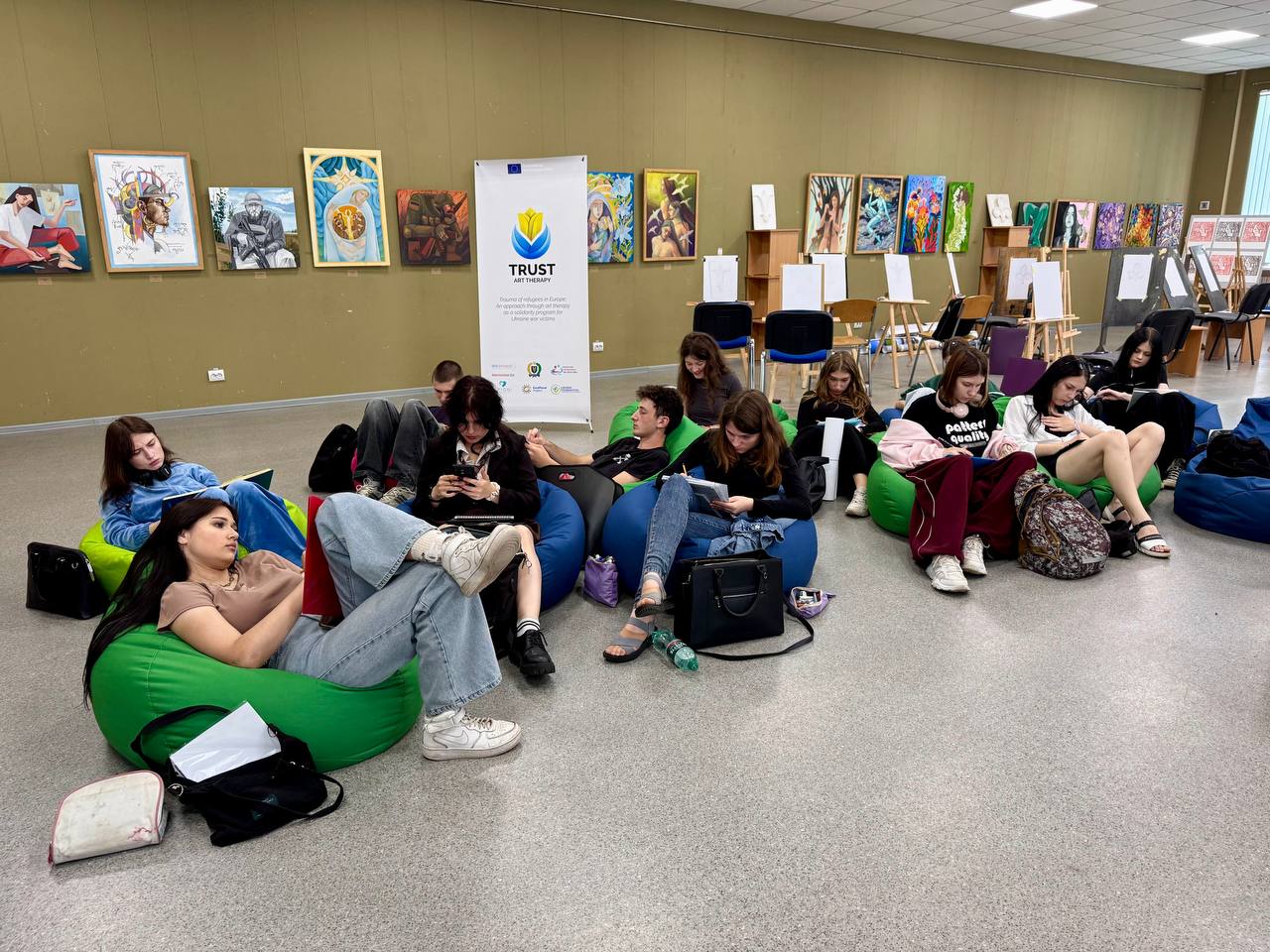

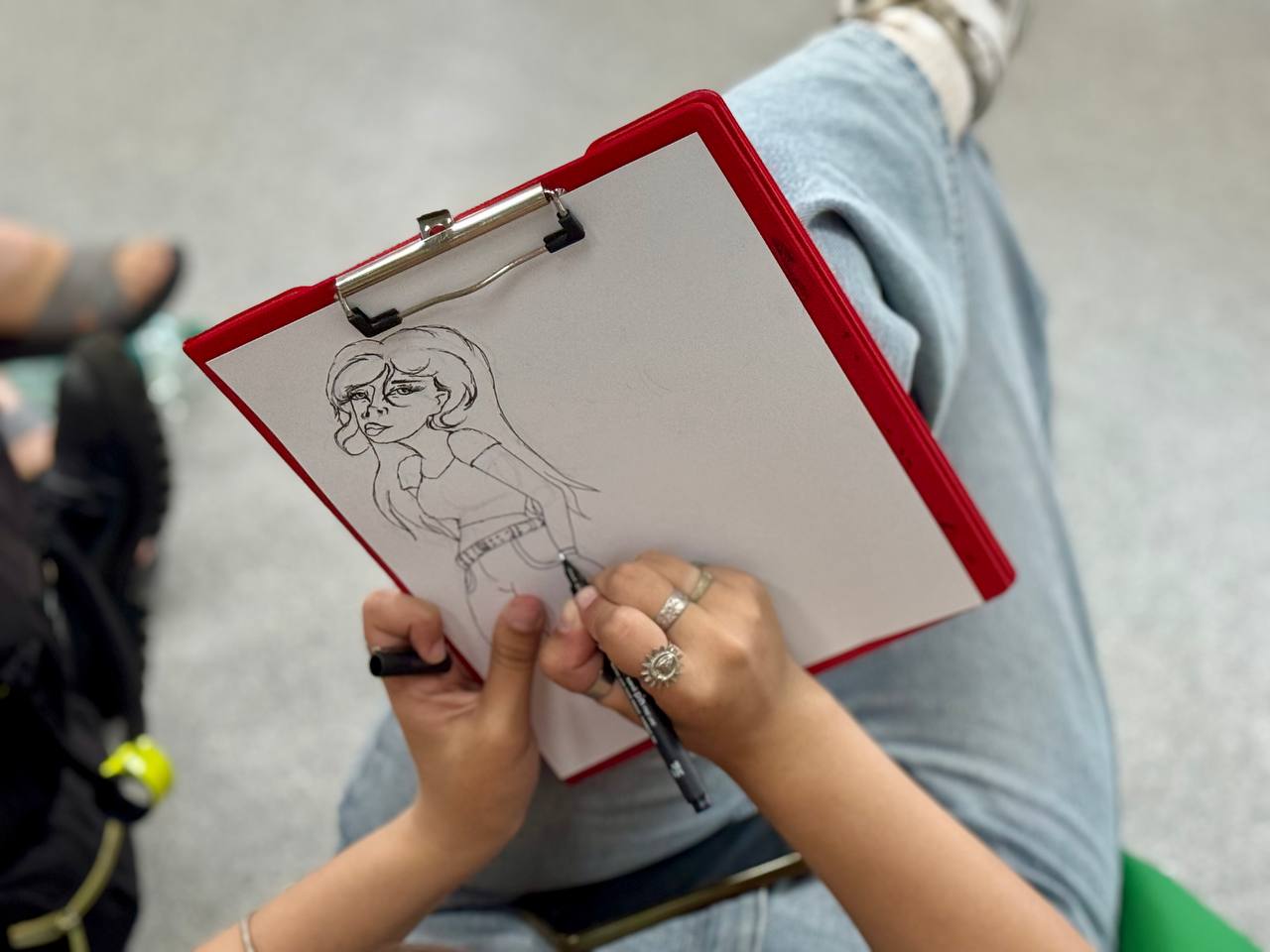
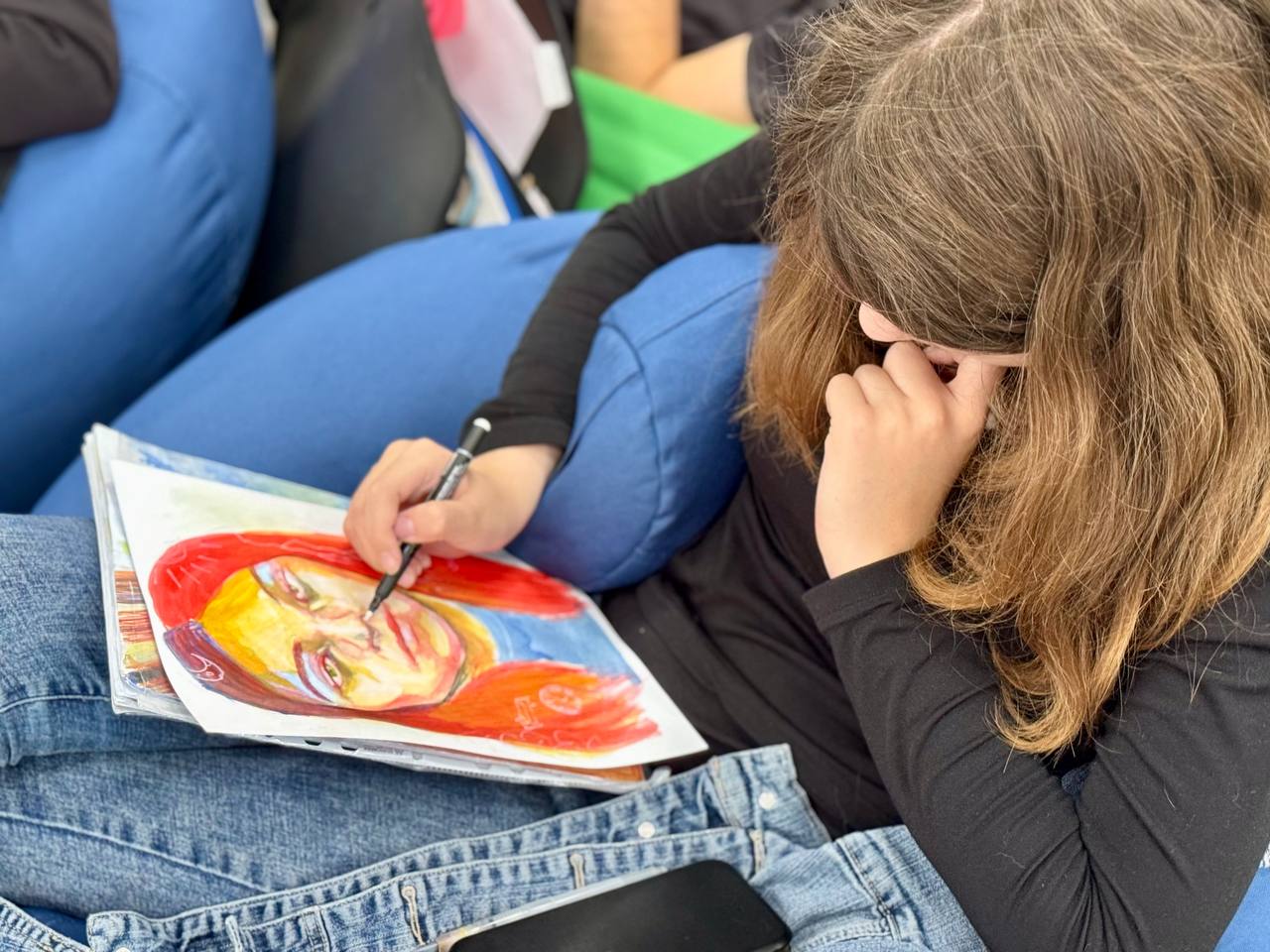
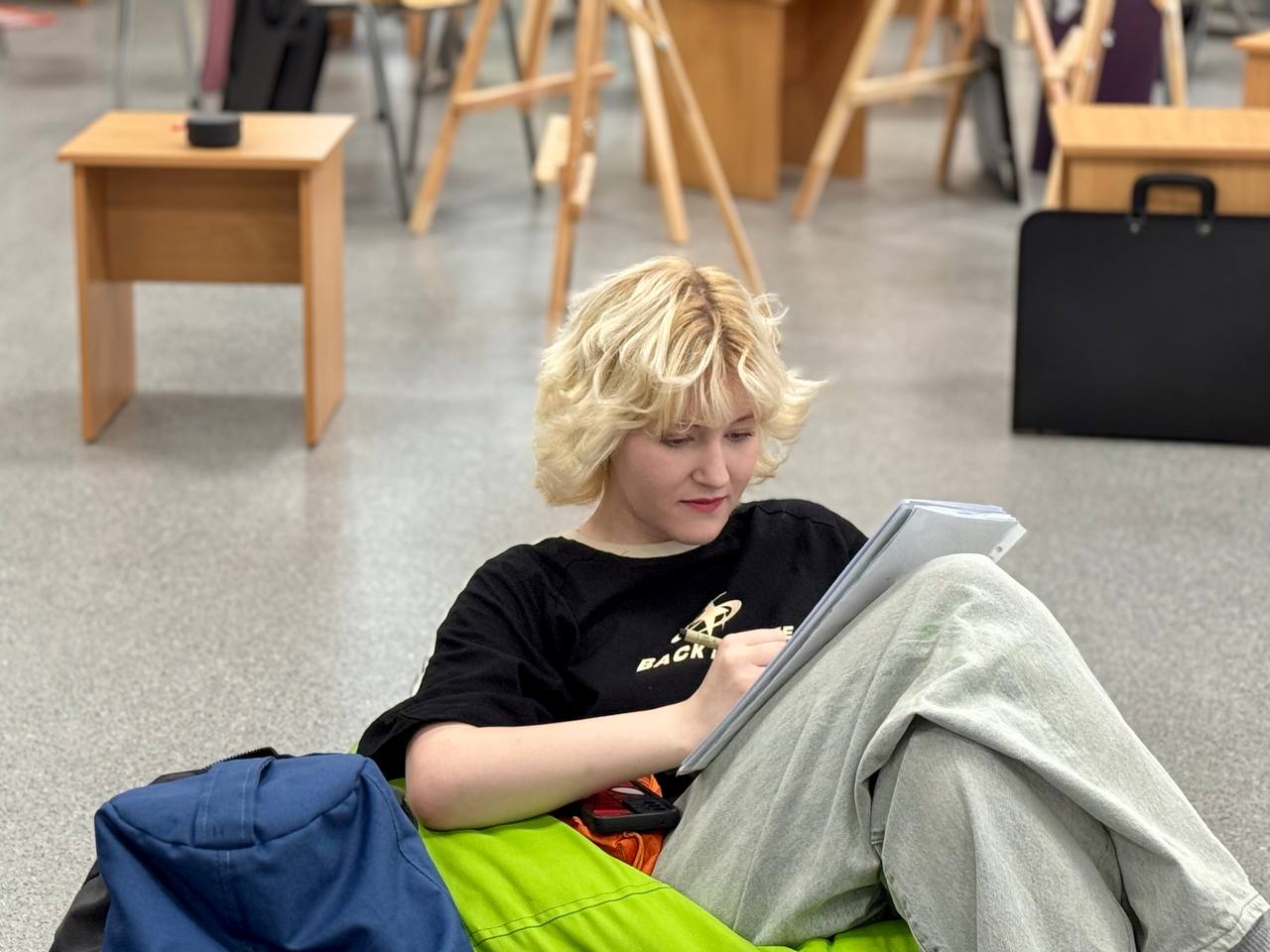
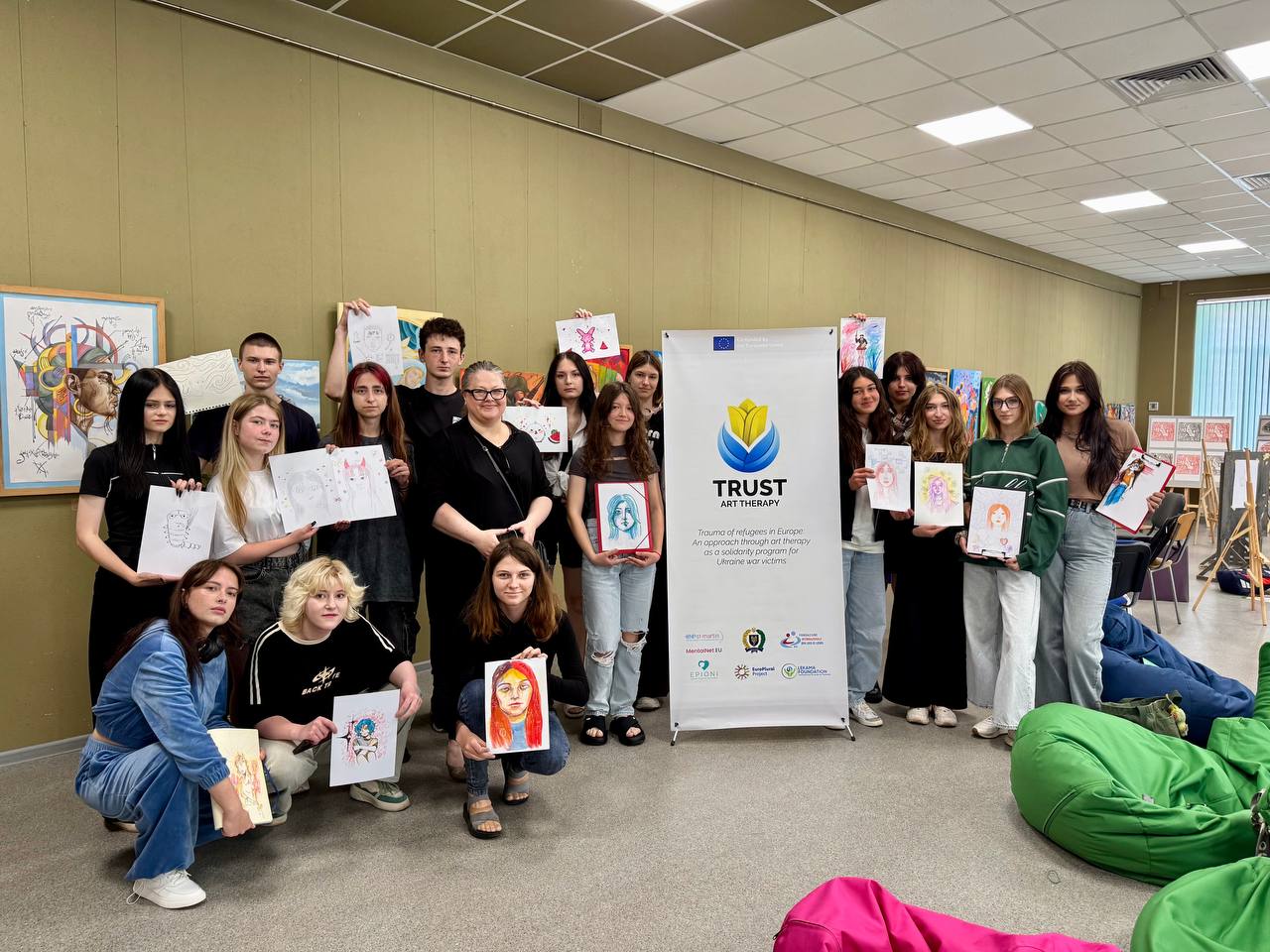
The event formed part of the international, large-scale EU-funded Erasmus+ KA220-ADU project “TRUST” – Trauma of refugees in Europe: An approach through art therapy as a solidarity program for Ukraine war victims (Grant No. 2024-BE01-KA220-ADU-000257527).
The project title is decoded as follows:
TRUST
T – Trauma
R – Refugees
U – Ukraine
S – Solidarity
T – Therapy
The project is co-funded by the EU and led by the Centre Neuro Psychiatrique St-Martin from Belgium, in partnership with the National University “Yuri Kondratyuk Poltava Polytechnic” (Ukraine), Greek Carers Network EPIONI (Greece), Fondazione Don Luigi Di Liegro (Italy), Lekama Foundation (Luxembourg), EuroPlural Project (Portugal).
Looking ahead, further art therapy events under the TRUST initiative will unveil new trauma-focused techniques and deepen self-help practices. After all, art is not only about beauty – it is about the power to live, even when life shifts. It is about the inner resource that sustains us when the ground seems to slip away beneath our feet.
Media Centre of
National University “Yuri Kondratyuk Poltava Polytechnic”



